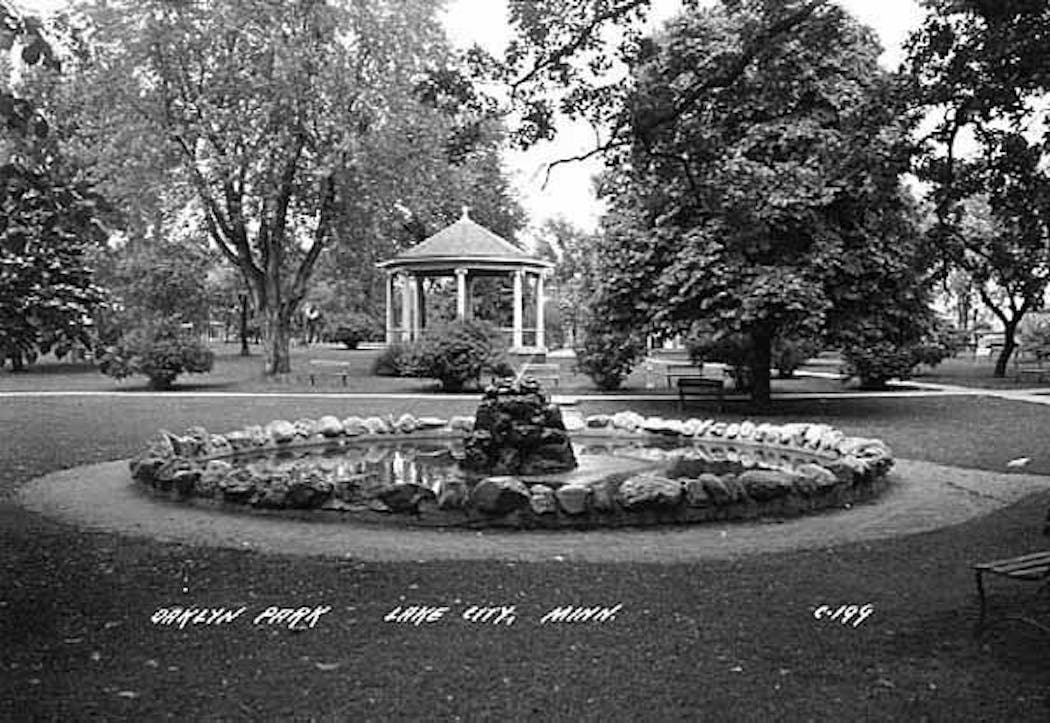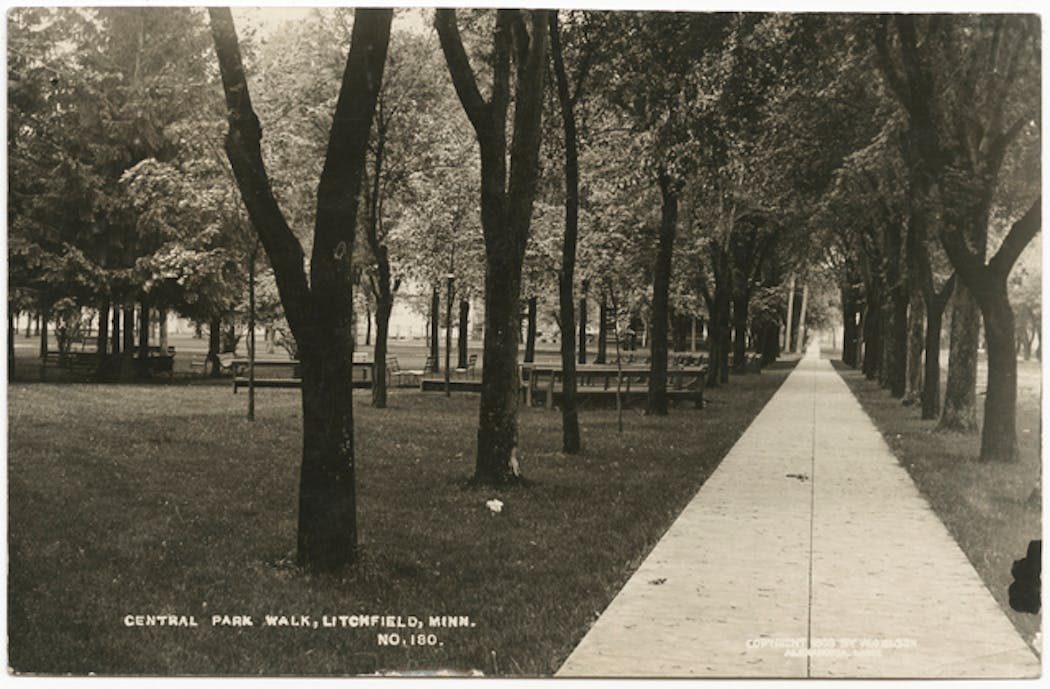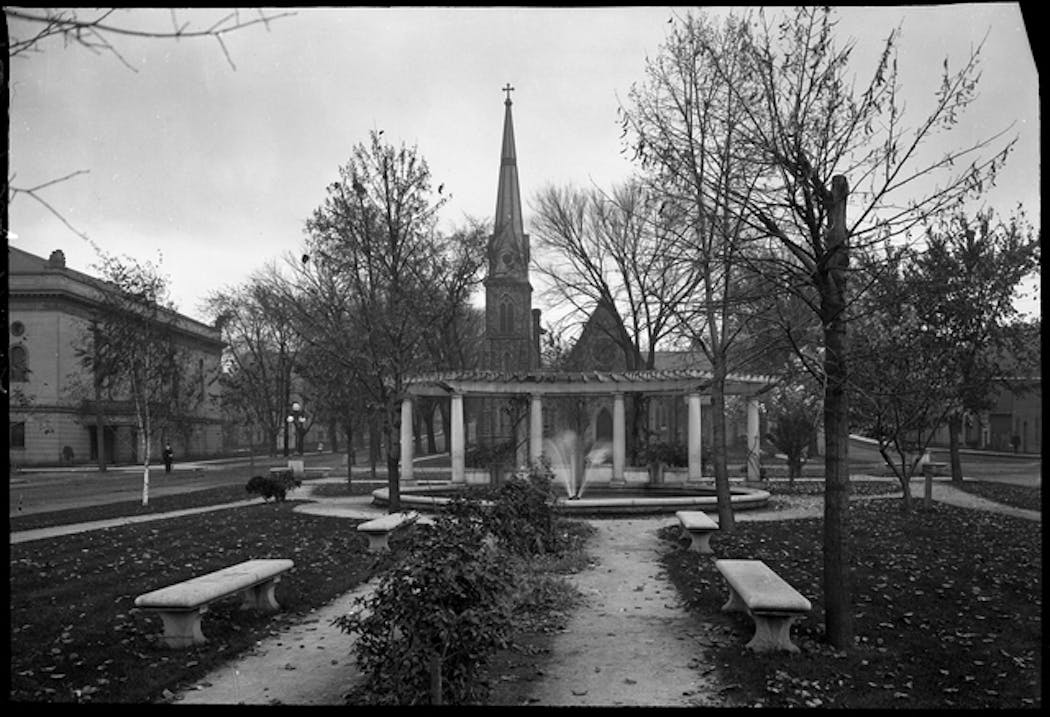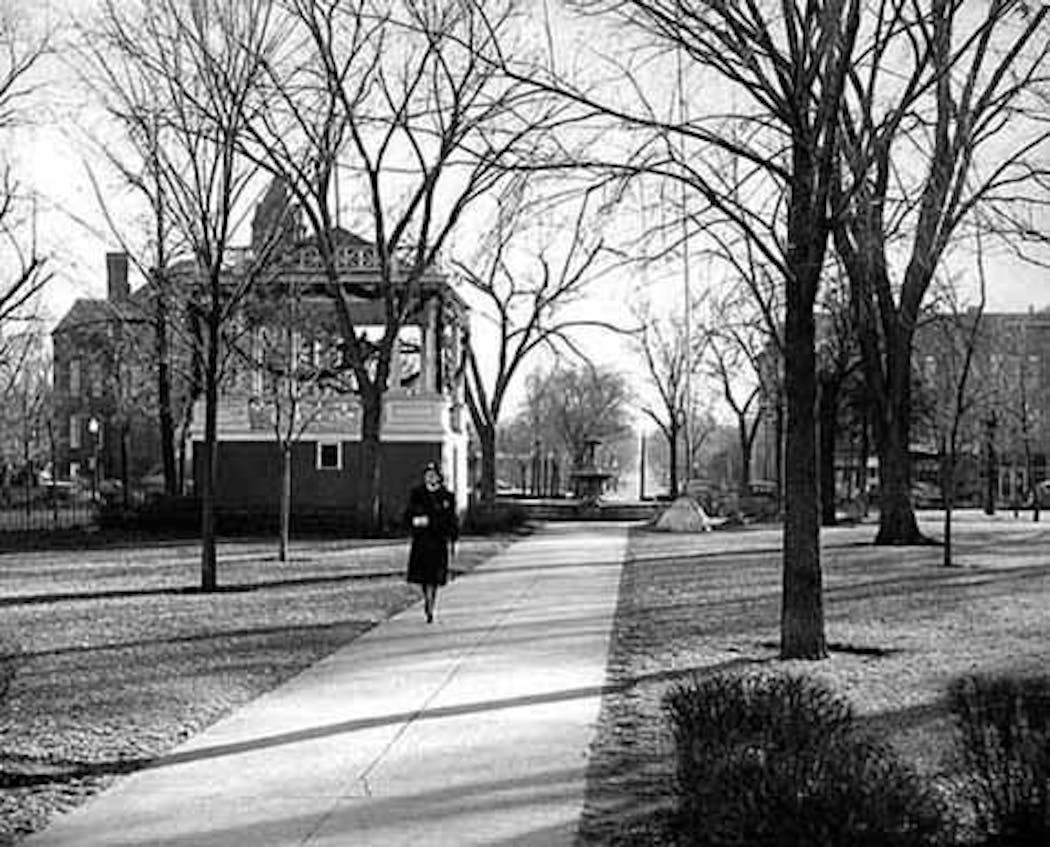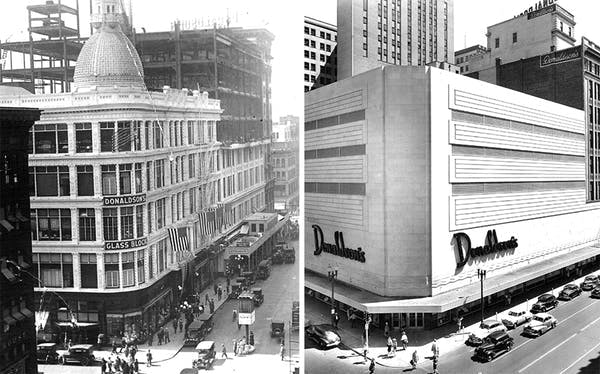After the Civil War, many Minnesota towns created picturesque parks. Called "beauty spots," these parks highlighted a town's assets — a central square, a riverbank recreation area or a picturesque streamside retreat complete with rustic wooden bridges.
Beauty spots were likely born out of a desire to mimic East Coast village greens and wooded glens here on the prairie. Postcards of the parks, though often retouched with color and perhaps even edited to remove flaws, document an early and earnest civic pride.
Towns like Litchfield, Le Sueur, Owatonna and Mankato were eager to let the world know about the civilized public parks they had to offer.
Many town parks grew up along rivers and lakes, including Mankato's Sibley Park, which boasted a racetrack and deer park. Located on the banks of the Minnesota River, it became a popular destination. But it wasn't the only one in the area.
Blessed with blufflands, Mankato had beauty spots with sweeping river views, but also more urbane locales, such as Lincoln Park in downtown, and a Lovers Lane.
In Bemidji, the beauty spot was a lakeshore parkway that linked its downtown Carnegie Library to the state teachers college, which would later become Bemidji State University.
Shelter on the plains
In much of western and central Minnesota, geographic features tend to be subtle. Without dramatic river bluffs, dense woods or lakes, townspeople constructed local landmarks, many of which were reminiscent of their pasts.
In railroad towns on the prairie, such as Litchfield, residents carved out a sense of local character by creating formal town parks. They installed formal, linear walks and planted a canopy of trees, then used the surrounding buildings to create an urbane sense of enclosure.
Across the Upper Midwest, even the smallest towns built parks, with formal iron fountains imported from the East Coast and bandstands for summer concerts. Like Litchfield's beauty spot, they served as sheltering public spaces that contrasted with the open prairie.
In Renville County, the small town of Olivia planted a grove of trees as its early town park. Less costly than an ornamental park with formal fountains, the canopy of trees offered a rare place of enclosure and shade. The linear layout of the trees and central path to a wooden bandstand established a sense of order on the open land.
Higher aspirations, growing towns
A generation later, in the City Beautiful and Beaux Arts eras (1900-30), Midwestern towns began to build even grander, neoclassically inspired parks with pergolas, performance halls and amphitheaters.
Owatonna's Central Park boasted a Craftsman-style bandstand and linear walks converging on an ornate, two-tier iron fountain.
In Red Wing, Broadway Park was nestled between churches and the neoclassical Sheldon Auditorium (one of the state's most beautiful theaters). The triangular space was furnished with stone benches, planting beds and a fountain pool sheltered by a curving pergola. Now named John Rich Park, it remains one of the most beautiful small civic spaces in the country.
Borrowing from Europe
Many of the state's oldest small town parks were, and continue to be, beautiful expressions of public space. But these beauty spots — many of which offered the reassurance of familiar landscapes — forced a European aesthetic on a "frontier" that had been inhabited for millennia.
Far away from larger cities, Minnesota's small towns staked out a claim to settlement with remarkable works of landscape architecture and design. The towns' founders were creating public parks for what they hoped would be a growing number of citizens, but they never understood the native cultures that came before them — people with a different sense of beauty and promise in the land.
Frank Edgerton Martin is a consulting writer for architecture and design firms and a historic landscape preservation planner.
US-Audiobooks-Top-10
Get better sleep with these 5 tips from experts
With graduation near, colleges seek to balance safety and students' right to protest Gaza war
Lithuanian soprano Asmik Grigorian makes belated Metropolitan Opera debut as Madame Butterfly

